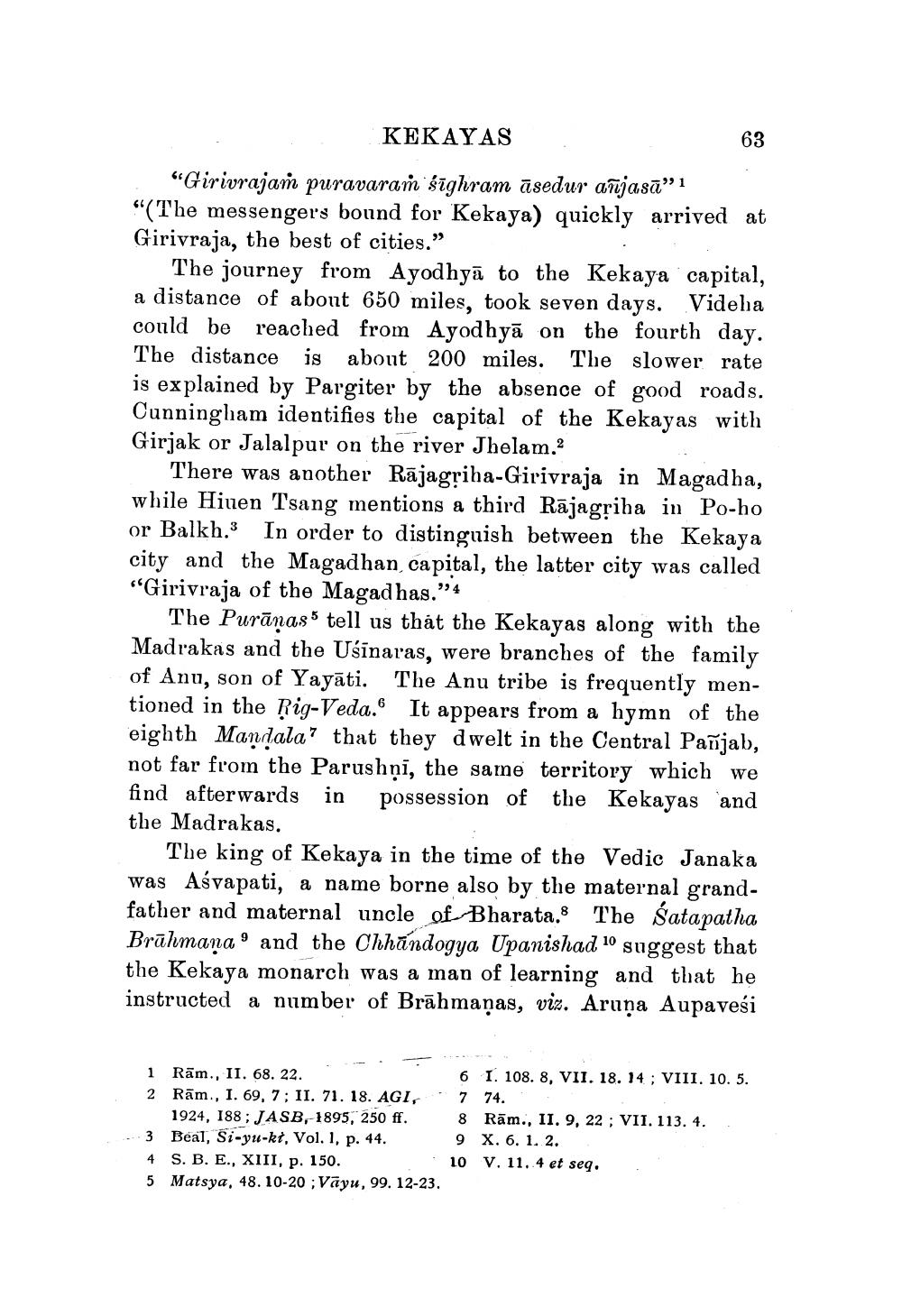________________
KEKAYAS
"Girivrajam puravaram sighram āsedur añjasā" 1 "(The messengers bound for Kekaya) quickly arrived at Girivraja, the best of cities."
The journey from Ayodhya to the Kekaya capital, a distance of about 650 miles, took seven days. Videha could be reached from Ayodhya on the fourth day. The distance is about 200 miles. The slower rate is explained by Pargiter by the absence of good roads. Cunningham identifies the capital of the Kekayas with Girjak or Jalalpur on the river Jhelam.2
There was another Rajagriha-Girivraja in Magadha, while Hiuen Tsang mentions a third Rajagriha in Po-ho or Balkh.3 In order to distinguish between the Kekaya city and the Magadhan capital, the latter city was called "Girivraja of the Magadhas."
"94
The Puranas tell us that the Kekayas along with the Madrakas and the Usinaras, were branches of the family of Anu, son of Yayati. The Anu tribe is frequently mentioned in the Rig-Veda. It appears from a hymn of the eighth Mandala that they dwelt in the Central Panjab, not far from the Parushņi, the same territory which we find afterwards in possession of the Kekayas and
the Madrakas.
The king of Kekaya in the time of the Vedic Janaka was Asvapati, a name borne also by the maternal grandfather and maternal uncle of Bharata. The Satapatha Brahmana and the Chhandogya Upanishad 10 suggest that the Kekaya monarch was a man of learning and that he instructed a number of Brahmaņas, viz. Aruna Aupavesi
1 Ram., II. 68. 22.
2
Ram., I. 69, 7; II. 71. 18. AGI,
1924, 188; JASB, 1895, 250 ff.
Beal, Si-yu-kt, Vol. 1, p. 44.
3
4
S. B. E., XIII, p. 150.
5 Matsya, 48. 10-20; Vayu, 99. 12-23.
63
6 I. 108. 8, VII. 18. 14; VIII. 10. 5.
7
74.
8
9
10
Ram., II. 9, 22; VII. 113. 4.
X. 6. 1. 2.
V. 11. 4 et seq.




